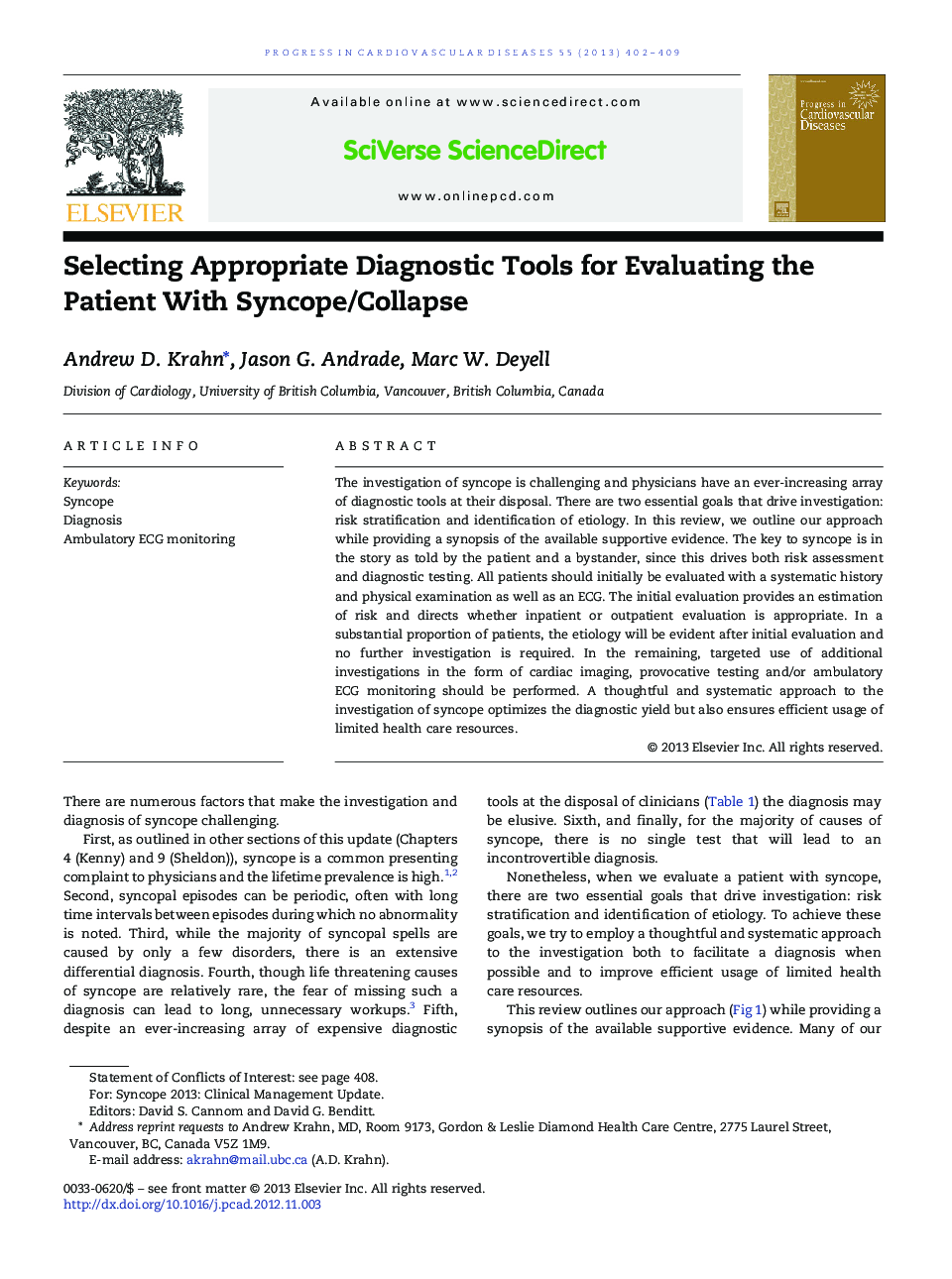| Article ID | Journal | Published Year | Pages | File Type |
|---|---|---|---|---|
| 3006497 | Progress in Cardiovascular Diseases | 2013 | 8 Pages |
The investigation of syncope is challenging and physicians have an ever-increasing array of diagnostic tools at their disposal. There are two essential goals that drive investigation: risk stratification and identification of etiology. In this review, we outline our approach while providing a synopsis of the available supportive evidence. The key to syncope is in the story as told by the patient and a bystander, since this drives both risk assessment and diagnostic testing. All patients should initially be evaluated with a systematic history and physical examination as well as an ECG. The initial evaluation provides an estimation of risk and directs whether inpatient or outpatient evaluation is appropriate. In a substantial proportion of patients, the etiology will be evident after initial evaluation and no further investigation is required. In the remaining, targeted use of additional investigations in the form of cardiac imaging, provocative testing and/or ambulatory ECG monitoring should be performed. A thoughtful and systematic approach to the investigation of syncope optimizes the diagnostic yield but also ensures efficient usage of limited health care resources.
